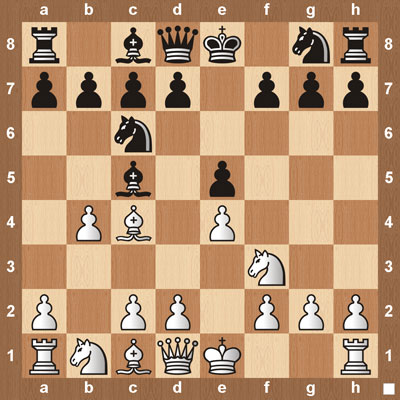
The Evans Gambit is an aggressive variation of the Giuoco Piano. For those players that like to play the Giuoco Piano I highly recommend playing the Evan’s Gambit.
1. e4 e5
2. Nf3 Nc6
3. Bc4 Bc5
4. b4
Much like other gambits, the Evan’s Gambit gives up an early pawn in exchange for rapid development and a lead in center control. White actually scores better with the Evan’s Gambit than not playing the gambit and following the main lines of the Giuoco Piano which is why I recommend playing it.
After black takes the pawn on b4, white will always continue with c3, followed by d4. The difference will depend on where the black bishop retreats to. The main line is for black to retreat back to a5 but you may also see him move back to c5, his originally square before he took the pawn, or back to e7 which seems on the surface to be a pretty safe square for black’s bishop.
If you are playing as white you need to make sure that you play aggressive. This gambit is not meant to trade down pieces. The Evans Gambit is used to keep the black king from castling and overwhelm black with very active pieces in the center. Black usually should give back the pawn advantage and get counter play in development but many players never like to give back any material once they get it. This is usually the downfall of black players as white has so many attacking lines that it usually is tough for black to defend all of them properly. Many Evans Gambit games do not last very long.
The key squares that white should note are the b3 square which usually will be home for the queen, giving support to the bishop on c4. a3 is usually a great place for the dark squared bishop and in many lines can prevent black from castling kingside. The white knight should develop to c3 as it controls the center and is not blocking off any diagonals for the bishops. Once the king castles king side for white, all the pieces will be very active. It is very hard for black to duplicate this development as they are usually forced to move their pieces in very defensive situations instead of their desired squares.
Watch the videos below to watch more detailed explanations of the opening, multiple variations, and extended lines.